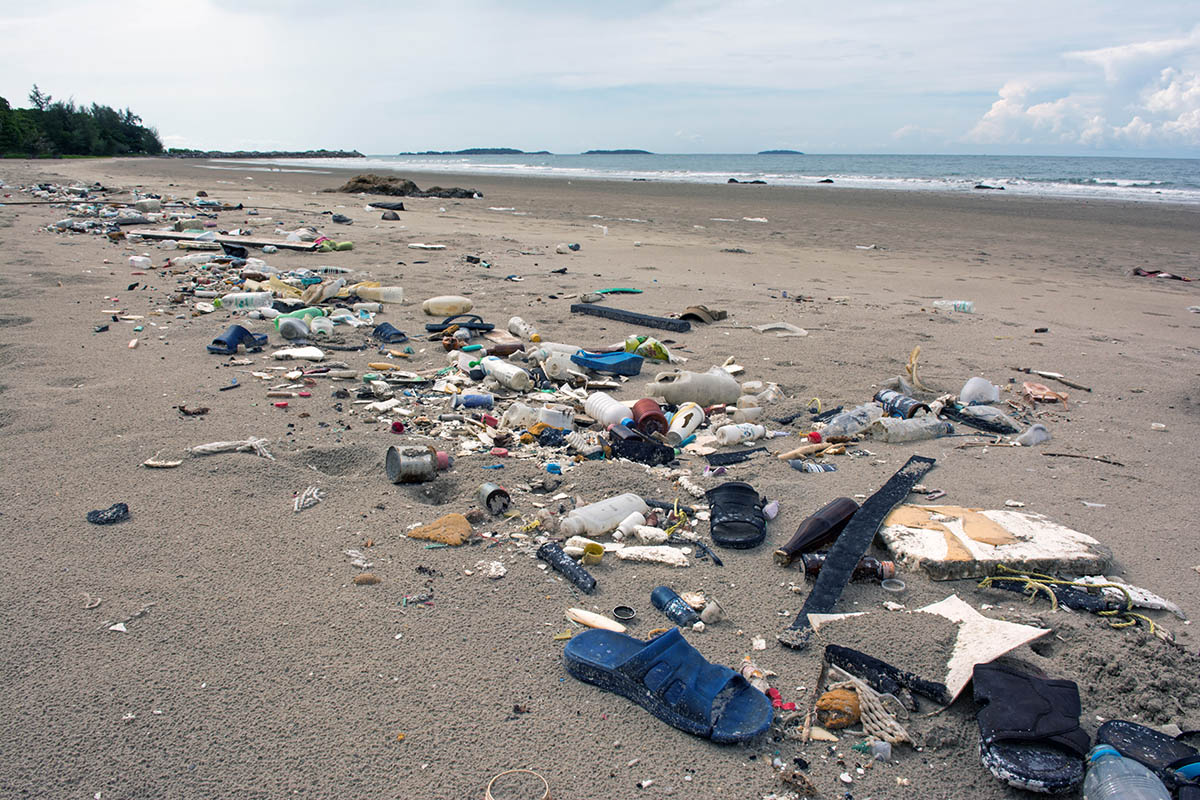
An OECD report anticipates marine debris will increase significantly in volume over the next several decades. | Santiparp Wattanaporn/Shutterstock
Globally, discarded plastic levels could nearly triple by 2060, with about half of the plastic ending up in landfill and less than a fifth recycled, an OECD report projected.
The Organization for Economic Cooperation and Development (OECD), a global policy forum that counts developed countries among its members, released a preliminary version of a global plastics outlook report on June 3. The document said that without “radical action to curb demand, increase product lifespans and improve waste management and recyclability, plastic pollution will rise in tandem with an almost threefold increase in plastics use.”
OECD plans to release the full “Global Plastics Outlook: Policy Scenarios to 2060” report on June 21.
The preliminary version forecast that almost two-thirds of discarded plastic in 2060 will be from packaging, low-cost products and textiles.
“If we want a world that is free of plastic pollution, in line with the ambitions of the United Nations Environment Assembly, we will need to take much more stringent and globally coordinated action,” OECD Secretary-General Mathias Cormann said in a statement. “This report proposes concrete policies that can be implemented along the lifecycle of plastics that could significantly curb – and even eliminate – plastic leakage into the environment.”
The report builds on OECD’s “Global Plastics Outlook: Economic Drivers, Environmental Impacts and Policy Options,” which was released in February. That report found that discarded plastic volumes have doubled in two decades, with most ending up in landfills, incinerated or in the environment.
Since that report release, U.N. member states have pledged to negotiate a legally binding international agreement by 2024 to end plastic pollution, the statement noted.
Rising consumption
By 2060, yearly global plastics consumption will hit 1.2 billion tons, up from 460 million tons in 2019, the report projected, if nothing changes. Recycled plastics usage is projected to grow quicker than virgin plastics and double in market share, the report said, but recycled plastics are only projected to make up 12% of total plastics use in 2060.
The recycling rate is projected to increase to 17% in 2060 from 9% in 2019, according to the report, but incineration and landfilling will be the fate of 18% and 50% of discarded plastic, respectively.
“The share of plastic that evades waste management systems – ending up instead in uncontrolled dumpsites, burned in open pits or leaking into the soil or aquatic environments – is projected to fall to 15% from 22%,” the report projected.
That still means that total discarded plastic generated, by weight, would grow from 353 million tons in 2019 to 1 billion tons in 2060. Plastic leakage to the environment would double to 44 million tons per year, and the “build-up of plastics in lakes, rivers and oceans will more than triple,” the report warned.
“The projected rise in plastics consumption and waste will come despite an expected increase in the use of recycled plastic in manufacturing new goods as well as technological advances and sectoral economic shifts,” the report said.
Exploring scenarios
The report evaluated the impact of two potential scenarios: A regional action scenario with both fiscal and regulatory policies, primarily in the 38 OECD countries, and a global action scenario with stronger policies implemented worldwide.
The first scenario could decrease discarded plastic levels by almost a fifth and cut plastic leakage into the environment by half, without a substantial impact on global GDP, which would be 0.3% lower in 2060 compared to business as usual, the report said. Under that scenario, recycled plastics would make up 29% of total plastics use. Recycling rates could hit 40%.
The second scenario could bring discarded plastic levels down by a third and “almost completely eliminate plastic leakage to the environment,” but it would lower global GDP by an estimated 0.8% compared to business as usual, the report said. The recycled plastics usage would hit 41% and recycling rates would nearly top 60%.
More suggestions to address the problem included placing taxes on plastics, including packaging; creating incentives to reuse and repair plastic items; setting targets for recycled content; implementing more extended producer responsibility programs; improving waste management infrastructure; and increasing litter collection rates.
More stories about research
- New report explores the future of CPG packaging goals
- RIT researchers develop AI-based textile recycling system
- Researchers: Effective plastic treaty requires production cuts



